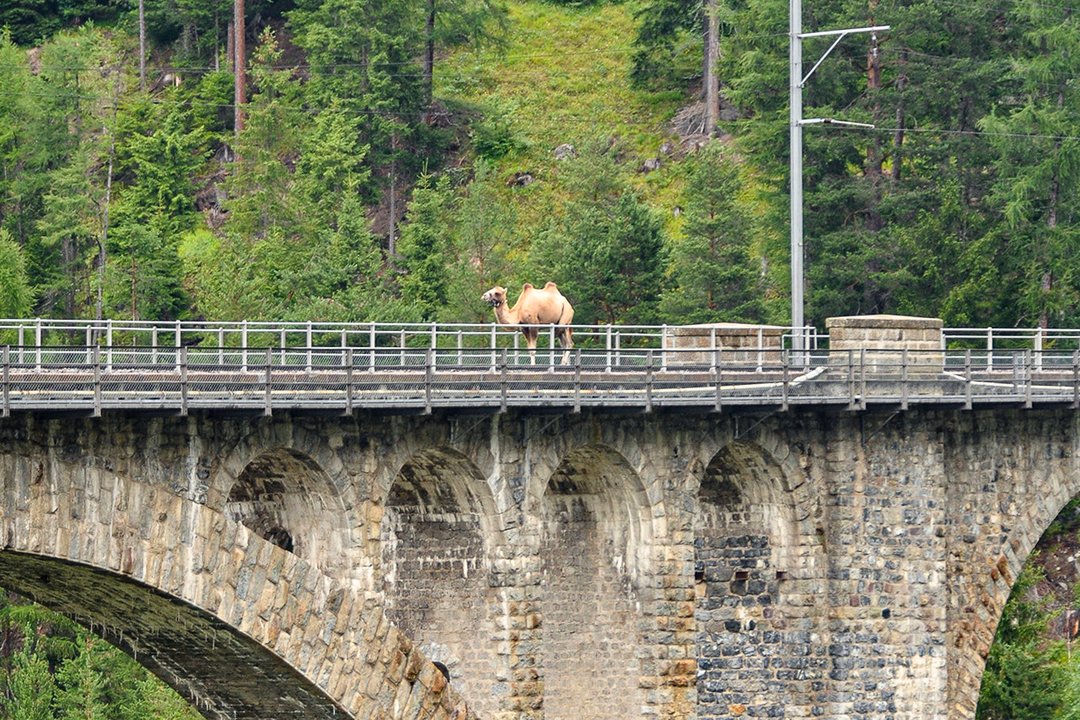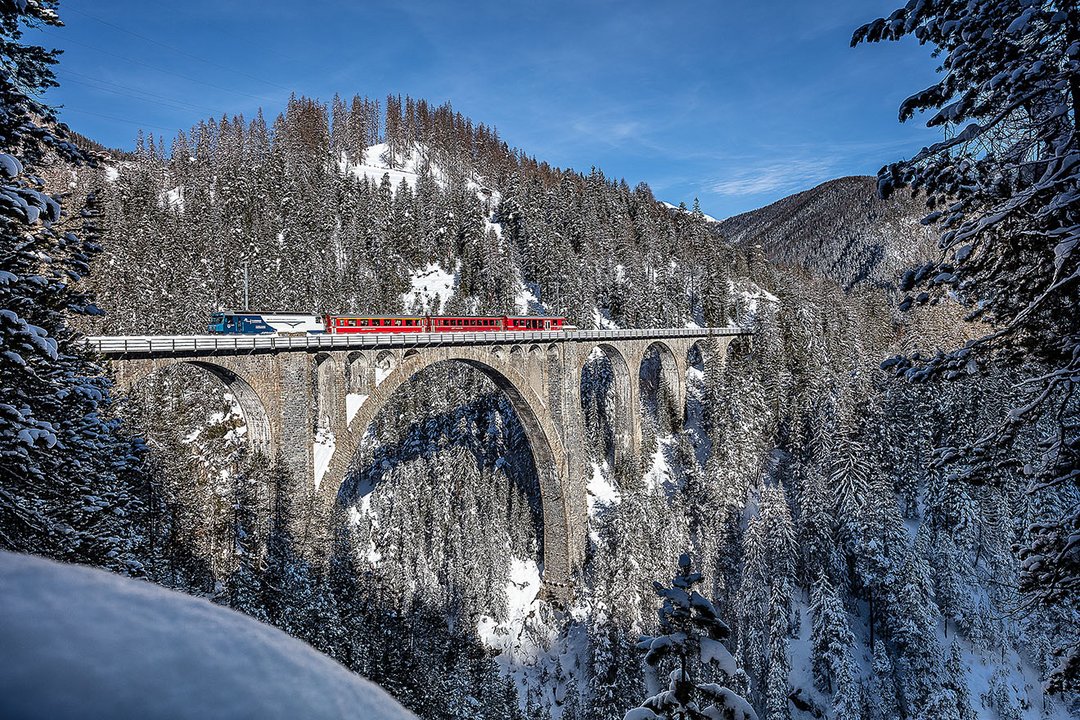Warenkorb
Sie haben keine Produkte im Warenkorb.
An extraordinary creature leisurely makes its way across RhB’s highest viaduct, the Wiesen Viaduct. A deer? Even a llama would be plausible. Or maybe just a Fata Morgana?
Even the local hikers, who have already observed all the different animals here, can’t help but be amazed. Although the Landwasser is rushing and roaring around 90 metres below the RhB tracks, a camel is sauntering from one end of the 200-metre-long viaduct to the other. As if it were at home here in Davos and Filisur, far from the desert sands.
Only upon closer inspection is it clear that there is a film crew and RhB security staff present. They are observing the scene from afar. For once, it is not the Landwasser Viaduct or a historic RhB railway building that is the focus of the film-makers. This time, the honour goes to the Wiesen Viaduct, the landmark on the Davos–Filisur route. Although the camel might just be distracting from the breathtaking viaduct.

An extraordinary view: a camel crossing the Wiesen Viaduct.
A technologically advanced and sophisticated system was used to construct the Wiesen Viaduct between 1906 and 1908. Timber centring was used to define the dimensions of the bridge before the workers could use stone, mortar and sand to build the actual bridge. The Coray system was developed by Richard Coray, who was regarded as one of the greatest Swiss bridge builders and known for being a man of few words and as strong as an ox. The necessary scaffolding was erected in 140 days under the direction of Richard Coray himself. As construction got under way, supplies of natural stone became ever scarcer. The workers therefore quickly reverted to using concrete blocks, which were wisely placed in hidden areas, allowing the entire facing to be made out of natural stone. The viaduct was completed in the winter of 1908. The track was officially opened on 1 July 1909.
Due to the rough terrain between Davos and Filisur – and to avoid the avalanche passages – RhB laid many of the railway lines in tunnels. Since further viaducts were required in addition to the Wiesen Viaduct, construction costs per kilometre of line ended up being almost as high as the costly Albula Line.
It was the Albula Line that paved the way for the track from Davos to Filisur. If the people of Graubünden had voted against building the Albula Line in November 1889, a connection to Filisur wouldn’t have been a big issue from Davos’ perspective. However, on 6 December 1903, the people of Davos voted in favour of raising the necessary CHF 1.25 million to construct the track. Klosters and other municipalities in Prättigau backed the project, enabling CHF 1.77 million to be raised and laying the foundations if you like for the backdrop for filming the camel on the Wiesen Viaduct.

The Wiesen Viaduct spans the River Landwasser at a height of 89 metres.
No comment has been made yet.
What do you think?